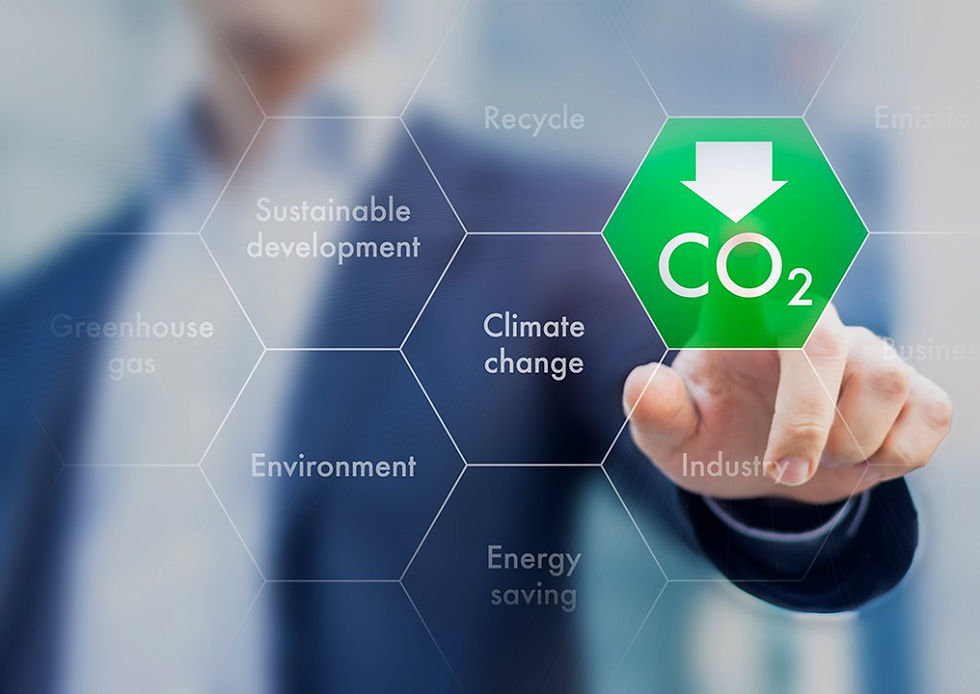Data: The Key to Decarbonisation and Compliance
- Chris Gunn

- Mar 21
- 3 min read

How do you turn sustainability goals into actionable strategies that really work?
With the built environment contributing a significant portion of the UK's carbon emissions, businesses are under pressure to do more than just make promises.
Facilities managers (FMs) are now at the heart of the drive to reduce carbon footprints, ensure compliance, and promote sustainable practices. The secret weapon? Smart, accurate data.
The Challenge
Buildings account for 23% of built environment carbon emissions in the UK, according to the UK Green Building Council. For businesses, this reality means significant responsibility – but also opportunity.
Some organisations are opting for net zero buildings designed to run on renewable energy. Others are retrofitting their facilities with technology that monitors emissions and usage, aiming to reduce waste and improve efficiency. As the demand for decarbonisation grows, knowing what to track and how to track it is critical.
FMs are now navigating multiple frameworks and regulations. These include SECR (Streamlined Energy and Carbon Reporting) and ESOS (Energy Savings Opportunity Scheme), both of which require robust energy and emissions reporting.
On top of this, voluntary initiatives like the UN Sustainable Development Goals and standards such as ISO 50001 are creating additional opportunities for organisations to measure and improve their impact.
But achieving compliance goes beyond ticking a box. It’s about using data to build a sustainable, future-proof system.
The Power of Data
So, where do you start?
The essentials include data for Scope 1 (direct emissions) and Scope 2 (emissions from purchased energy). For businesses ready to raise the bar, tracking Scope 3 emissions – the ones buried within supply chains – shows a powerful commitment to sustainability.
Energy consumption itself is an obvious starting point: electricity, gas, water, and more. But to deliver meaningful change, organisations also need the ability to track the effects of energy efficiency projects, such as installing solar panels, heat pumps or upgrading insulation.
Data shouldn’t stop with compliance. Performance metrics, like carbon intensity (e.g. CO2e/kWh), allow businesses to uncover inefficiencies, compare results across different facilities, and identify where change is needed.
Enter IoT Solutions
Previously, gathering this data has often been complex, resource-heavy, and delayed. But IoT-enabled solutions such as those from EnviroLogik are changing the game. With real-time monitoring tools, FMs can see exactly how their building is performing. Battery powered sensors and gateways integrate seamlessly into facilities, tracking everything from energy use to emissions. The data is collected into cloud-based platforms, where it is analysed and turned into actionable insights.
Beyond tracking, automated systems make reporting incredibly efficient. Analytics highlight inefficiencies, compare trends over time, and even predict future energy requirements – helping organisations make strategic, informed decisions.
And the payoff? Not just the ability to meet SECR or ESOS requirements but also a system designed to support long-term sustainability.
Why it Matters
Data-driven carbon reporting is no longer a "nice to have". It’s a must-have.
Done right, it offers more than compliance. Building transparency builds trust with stakeholders. Highlighting sustainability commitments can strengthen your organisation's reputation. And advanced monitoring can reduce waste, cutting both emissions and costs.
It’s also a chance to stay ahead of evolving regulations. Compliance expectations are only tightening – but with the right systems, your business will not only adapt; it will thrive.
Question Time
Has your organisation started using data and IoT-enabled solutions to meet carbon targets? What’s been your biggest challenge so far?
I’d love to hear your insights and experiences in the comments below. Together, we can create a more sustainable future.
Want to know more about how data can drive your decarbonisation strategy?
Let’s start the conversation. send us an email



Yorumlar